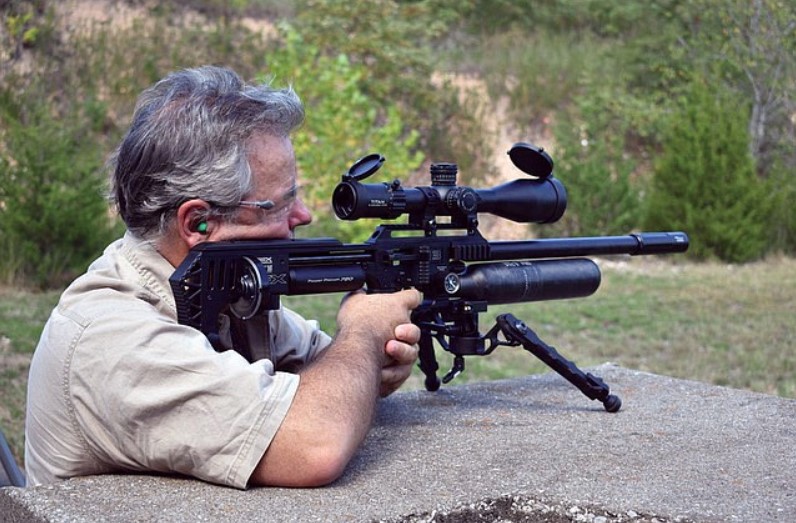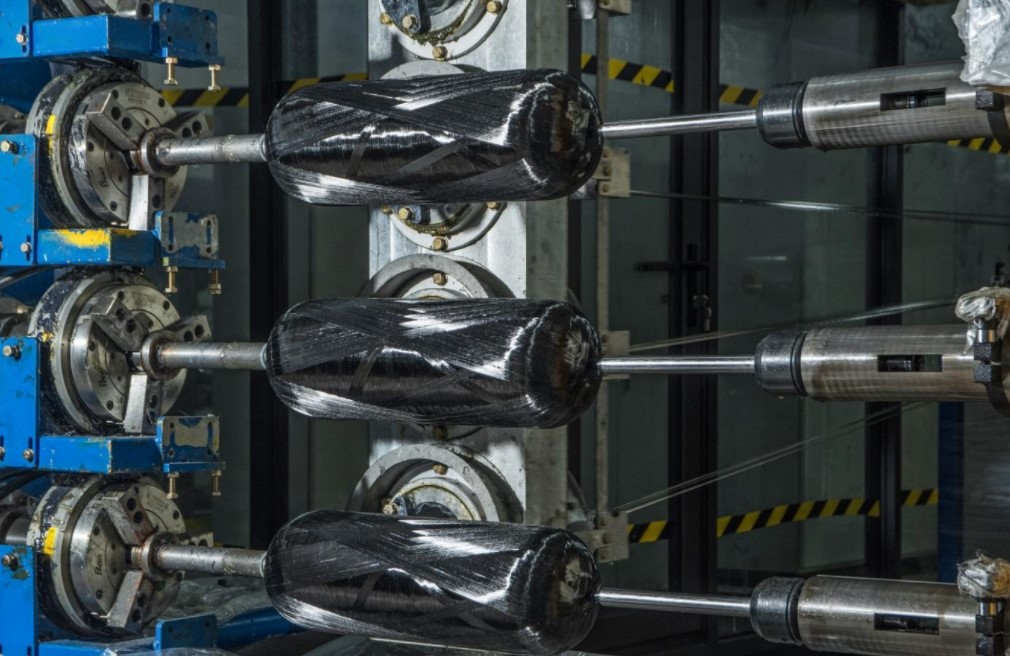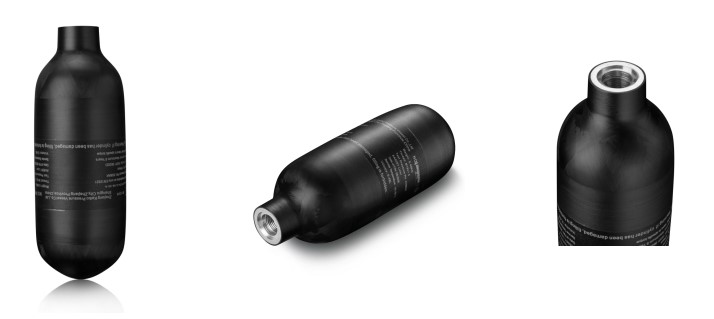In the airsoft, airgun, and paintball industries, one of the key components that directly affects performance and user experience is the gas supply system. Whether it is compressed air or CO₂, these gases must be stored in safe and efficient containers. Over the years, metal cylinders such as aluminum or steel were the standard choice. Recently, carbon fiber composite tanks have gained more ground. This shift is not a matter of trend, but rather a practical response to the balance of safety, weight, durability, and usability.
This article looks step by step into why carbon fiber composite tanks are being applied and adopted in these industries. We will review their structure, performance, advantages, and practical implications compared with traditional tanks.
1. Basic Structure of Carbon Fiber Composite Tanks
Carbon fiber composite tanks are not made from carbon fiber alone. Instead, they combine different materials in layers:
-
Inner liner: usually made from aluminum or high-strength plastic, which serves as a gas barrier.
-
Outer wrap: layers of carbon fiber reinforced with resin, which provide the main strength and allow the tank to hold high pressure safely.
This combination means that the liner ensures airtightness, while the carbon fiber wrap takes the majority of the mechanical stress.
2. Pressure and Performance
In airsoft, airguns, and paintball, operating pressures often reach 3000 psi (about 200 bar) or even 4500 psi (about 300 bar). Carbon fiber tanks can reliably handle these pressures because of the high tensile strength of the fiber material. Compared to aluminum or steel cylinders:
-
Steel tanks: safe but heavy, leading to limited mobility.
-
Aluminum tanks: lighter than steel, but usually capped at lower pressure ratings, often around 3000 psi.
-
Carbon fiber composite tanks: capable of reaching 4500 psi while staying much lighter.
This directly translates into more shots per fill and more consistent pressure regulation during gameplay.
3. Weight Reduction and Handling
For players and hobbyists, the weight of the equipment matters. Carrying heavy gear affects comfort and speed, especially during long sessions or competitive events.
Carbon fiber composite tanks provide a clear benefit here:
-
A carbon fiber 4500 psi tank is often lighter than a comparable aluminum or steel tank at 3000 psi.
-
Less weight on the marker (gun) or in a backpack allows easier handling.
-
Reduced fatigue means better endurance during extended use.
This weight advantage is one of the main drivers for adoption across the three industries.
4. Safety and Reliability
Safety is always a core concern when storing high-pressure gas. Carbon fiber composite tanks undergo strict production standards and testing, including hydrostatic testing and impact resistance checks.
Compared with metal tanks:
-
Carbon fiber tanks are designed to vent safely if damaged, rather than rupture violently.
-
They resist corrosion better than steel tanks, as the outer composite is not prone to rust.
-
Regular inspections are still required, but the service life is predictable and supported by certification.
In the airsoft, airgun, and paintball community, these factors give users confidence to rely on higher-pressure storage without fear of sudden failures.
5. Usability and Compatibility
Carbon fiber tanks are typically paired with regulators that step down the high pressure to levels usable by markers. Their adoption has also pushed accessory makers to provide compatible fittings and filling stations. Over time, this compatibility has improved across regions and brands.
For the user:
-
Filling a 4500 psi tank may require access to a specialized compressor or a SCBA (self-contained breathing apparatus) fill station, but once filled, it offers more use per session.
-
Paintball fields and airsoft arenas increasingly provide filling services that support carbon fiber tanks.
-
Users in the airgun field also benefit, as high-power pre-charged pneumatic (PCP) rifles can be filled more conveniently.
6. Cost and Investment Considerations
One of the barriers to adoption is cost. Carbon fiber composite tanks are more expensive than aluminum or steel ones. However, the practical advantages often offset the price for serious users:
-
Longer runtime per fill means fewer refills during matches.
-
Lightweight handling enhances play and reduces fatigue.
-
Higher safety and certification standards justify the upfront cost.
For casual players, aluminum tanks may still be a reasonable choice. But for regular or competitive users, carbon fiber is increasingly seen as the practical investment.
7. Maintenance and Lifespan
Every pressure vessel has a lifespan. Carbon fiber tanks typically have a limited service life, often 15 years, with hydrostatic testing required every few years depending on local regulations.
Key points for users:
-
Tanks must be visually inspected for damage or wear.
-
Protective covers or cases are often used to avoid scratches or impacts.
-
Following manufacturer and local safety guidelines ensures long-term safe use.
While this requires attention, the lighter weight and higher performance still make the extra care worthwhile.
8. Industry Trends and Adoption
Across airsoft, airgun, and paintball, adoption has grown steadily:
-
Paintball: Carbon fiber tanks are now a standard for tournament players.
-
Airguns (PCP rifles): Many users rely on carbon fiber cylinders for home filling due to their higher capacity.
-
Airsoft (HPA systems): Growing interest in HPA-powered platforms has pushed carbon fiber tanks into this segment, especially for advanced players.
This shows a broader shift from traditional heavy tanks toward more efficient, user-friendly composite designs.
Conclusion
Carbon fiber composite tanks are not simply a modern upgrade; they represent a practical evolution in how compressed gases are stored and used in airsoft, airguns, and paintball. Their combination of high pressure capacity, light weight, safety, and improved user experience makes them a logical choice for serious players and enthusiasts. While cost and required maintenance remain factors, the overall advantages explain why adoption continues to increase across these industries.
Post time: Sep-28-2025




